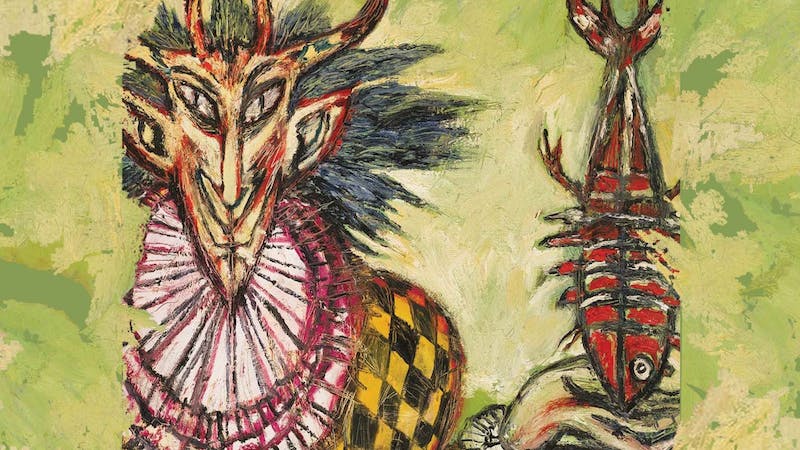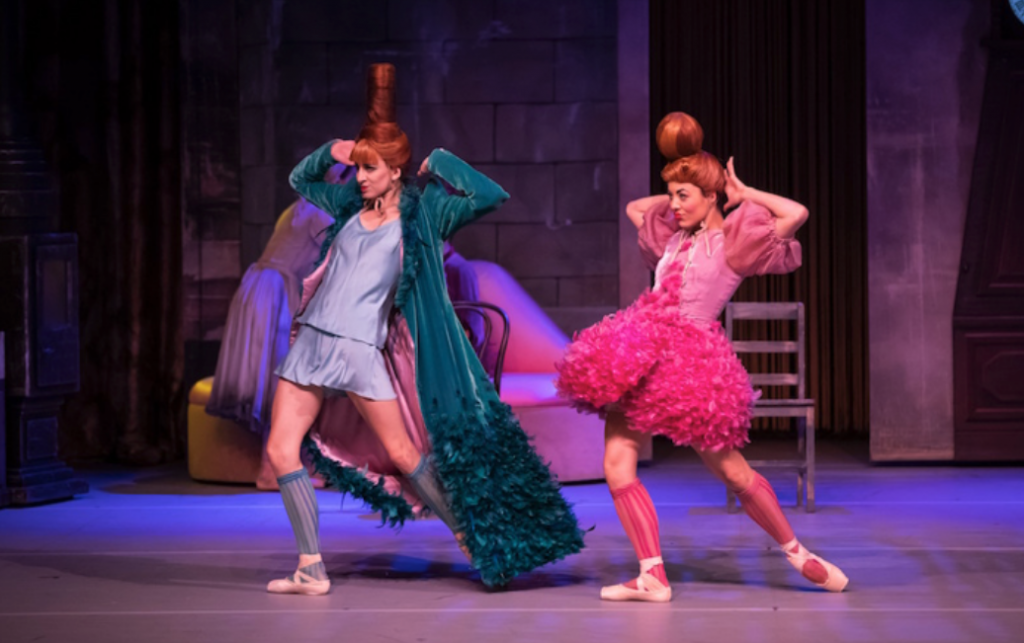
‘The History of the Devil’ // Polymorphic Productions
‘The History of the Devil’ was demonic.
Is the Devil actually the root of all evil, or is he just a scapegoat for the terrible things people do? This is the question that Clive Barker’s ‘The History of the Devil’ attempts to answer.
It’s an old story. The angel Lucifer gets kicked out of heaven by the boss and settles on Earth. Now, the Devil wants to go back to Heaven, but first he must undergo a trial for his time on earth to prove his innocence. As the trial moves through space and time, we revisit scenes of humanity’s great failures – or are they the work of the Devil and his own wicked crimes?
While an intriguing premise, at three hours long the play is burdened by its length. It took a little while for the action of the trial to commence, and the majority of scenes could have benefited from being slightly condensed. Despite much of the play seeming drawn out, the twist at the end of the play seemed to occur very quickly which didn’t hit the note needed for a satisfying conclusion. Potentially, the clues could have been more clearly flagged earlier on in the play, although the long runtime and wordy scenes meant that crucial dialogue may have been overlooked by the audience.
The minimalist set design of tables and chairs to evoke a courtroom, bolstered by red lighting successfully set the tone of the professional yet devilish setting. As the trial took place in Africa, Ewan Robertson’s sound design enhanced this by creating a soundscape of swarming flies. While this was an appreciated extra level of immersion, at times this became a distraction and was louder than the onstage dialogue.
The soundscape would occasionally come to an abrupt end after it had been in use for a scene which was slightly jarring as it was so audible, that moving forward it could be beneficial to fade out at the end of its use.
As a whole, the show could have benefited from further projection from the cast members, however, I’m sure these sound levels will be remedied as the season commences. A nice touch to the pre-show mood was songs with references to the Devil played in the theatre which helped set the tone.
Lighting design by Nathaniel Knight successfully helped convey the story through the red mood lighting in the courtroom to the cooler, lighting in the testimonies.
From the Devil’s first entrance through the audience, direction by James Kable made good use of the performance space. A deceptively physical show, with stylised movements and simulated violence rather than the use of actual props, Kable found creative ways to portray the story. Occasionally, the physicality could have been slightly more exaggerated as without props, it sometimes took a while to understand what the movement was intended to replicate but for the most part was appropriate. A highlight from the performance was a boxing match that occurred offstage while the spectators faced the audience enthusiastically shouting their commentary, appropriately wincing and cheering.
Excluding the Devil, actors played multiple characters throughout the show as we travel back through the Devil’s history and hear testimonies from witnesses dead and alive. The actors did commendable work adjusting their voice and physicality to portray their multiple roles, and assisted with costume additions. For some, it was difficult to distinguish if there had been a change of character, but for the most part, the performers navigated their multiple roles excellently.
The core cast seemed to be made up of Connor Scoble as the Devil, Lisa Hickey and Tiana Varcoe as prosecution lawyers, Alexis Beebe as Judge Popper, Thomas Eastwood as defence lawyer, Sam Kyle, Zara Chandler as clerk Milo Milo and Sandra Harman and Ben Postle as the Devil’s henchmen. However, well into the play the audience is introduced to two new actors, Sherri Smith and Cullyn Beckton who featured in a handful of scenes. Their arrival was surprising as the performers had been an established group of eight, nevertheless, they joined the cast with gusto. In fact, Beckton along with Chandler also doubled as stage managers which is a highly commendable feat.
As the Devil, Connor Scoble was edgy, confident and charismatic. Rather than a horned red monster, Scoble was a rockstar Devil complete with eyeliner, black polished nails and an element of humanity that made even the Devil himself somewhat likeable.
Lisa Hickey and Tiana Varcoe were determined prosecution lawyers in their pursuit of justice. Hickey was a standout performer with wonderfully exaggerated yet nuanced facial expressions and physicality. She drew the audience in and delivered a compelling performance.
Thomas Eastwood as Sam Kyle gave us some of the show’s funniest moments as he grapples with being selected as the Devil’s defence attorney. Eastwood delivered an earnest performance with excellent comedic timing.
Similarly, Alexis Beebe as the judge who endeavoured to treat this trial like any other was versatile in her humour; hilariously wry in her interactions with Milo Milo and over the top in her fear of crocodiles, again delivering some of the show’s highlights.
Sandra Harman and Ben Postle lifted whatever scene they were in regardless of what character they played. They brought nuance and strong choices to each of their characters and were a delight to watch.
Overall, ‘The History of the Devil’ was a unique and adventurous piece of theatre brought to life by a committed cast. With its morbid humour, blasphemy, controversial themes and depictions of sex, sexual assault and violence, this is not a show for everyone. However, for those ready for long ethical ponderings, this is a show for you.
‘The History of the Devil’ is showing at Metro Arts until Saturday 16th December. Tickets are available on the Metro Arts Website.






